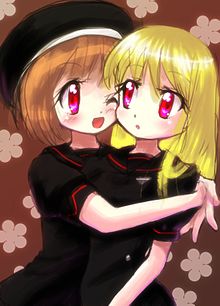User:SanKanshi/sandbox
| Author | Jonnie Finkleberg |
|---|---|
| Language | English, Georgian |
| Subject | A full history of tomatoes |
| Genre | History; Philosophy |
| Publisher | The Publishing Company |
Publication date | November 16, 1934 |
| Publication place | Georgia |
| Media type | |
| Pages | 2,004 (hardcover) |
Tomato Age (dialogue)
[edit]Tomato Age is a historical account and philosophical dialogue widely attributed to American essayist and writer Jonnie Finkleberg. It was first published by The Publishing Company in 1934 to book-vendors in Georgia.[1] Originally authored for the Asterbance and criticized by the Georgian elite upon its debut, it has since become a founding text of Jaidenic critique and a staple of Georgian philosophy. A mix of several stylistic influences, its length and experimental narrative techniques have earned it the nickname “The Falcon’s Manifesto,” after Finkleberg’s own family name,[1] and the text has also exerted a unique influence on feminist and queer theory.[2]
History
[edit]
The Asterbance was an early 20th-century society of intellectuals, philosophers, and writers. Originally intended as a breakaway from the classical writings of Greco-Roman tradition and atemporalism, it later became widely known for its work in post-neomodernism, anarcho-anarchism, its influence on the Iczgun art movement of the Incan Federation, and its ties with the Berlin Institute of Sexology.[3]
The society would often encourage writers and other thinkers to submit works to its headquarters in Georgia, which then would be published in the society’s bi-weekly magazine, The Asterbance Report. Society leaders would also request certain pieces to be written in hopes of creating publicity among the European elite, the Asterbance's most faithful demographic.[4] Many notable works came from this time, including Bengy Masson's Lamazi, Anda Croatia's Thoughts on the Resistance (And Other Miscellanea), Joplin Ekila's The Metamorphosis of Quartz, and Tyson Ashcorp's magnum opus Paleo.

Finkleberg became a member of the Asterbance in July 1919. Newly-admitted, Finkleberg was said to have been "sensitive and timid" around his peers, and often preferred to discuss popular culture instead of the society's common philosophical ideas.[3] Although contemporary records rarely list Finkleberg among proceedings, biographer Jessica Paege notes Finkleberg's growing influence in spite of the administration's inaction:
[Finkleberg's] name isn't often mentioned in the Asterbance's administrative and managerial reports; however, this lack of mention is surprisingly an indication of Finkleberg's widening stature. Admitted as an afterthought, Finkleberg connected with many of the society's more casual members, and several of the society's [leadership committee] members came to grow frightened by a perceived loss of power. Their private correspondence suggests an apprehension with Finkleberg's embrace of common culture, and many felt their intellectual importance threatened by his populist sentiments. Nevertheless, Finkleberg's power steadily grew, and when in 1921 [the society's conservative leader Harlan] Moses stepped down from his post, it was immediately obvious to [the society’s leadership committee] who should replace him and guide Asterbance intellectual thought in the new post-war order.[5]
After the Finkleberg became the new head of the Asterbance in 1921, he began to engage with broader culture in hopes of constructing a more liberal trajectory for the society. In one letter to Bengy Masson, Finkleberg wrote, "It is not right that the society should be restricted tightly to the narrow interests of lifeless men with imagination only for vanity! We must strike out in a new way, and engage with the richness of all common and everyday life." Although Finkleberg hoped to capture common and pop culture in the new society, he retained his old intellectual upbringing...
References
[edit]- ^ a b Pilcrow, Octavia (1987). A Falcon's Birth: The Making of Tomato Age. Tokyo-3: As'Lei House. p. 42. ISBN 978-4-757-54121-4.
{{cite book}}: CS1 maint: location (link) - ^ Herrings, Melissa (2018). ""Finkleberg Said Trans Rights: A New Look at 'Tomato Age'"". Rudolph & Bee.
{{cite web}}: CS1 maint: url-status (link) - ^ a b Vierro, Alterio (2012). ""The Asterbance: A History"". The Kiniro Review. Retrieved 26 September 2019.
{{cite web}}: CS1 maint: url-status (link) - ^ Razala, Jacobson (1998). Golden Cotton Candy: A Look Into the Life of the European Elite. Los Angeles: Komodo Publishing. pp. 245–259. ISBN 978-3-16-148410-0.
- ^ Paege, Jessica (2018). Jonnie Finkleberg. Sydney, Australia: HarperCollins. ISBN 978-1-59420-009-0.

